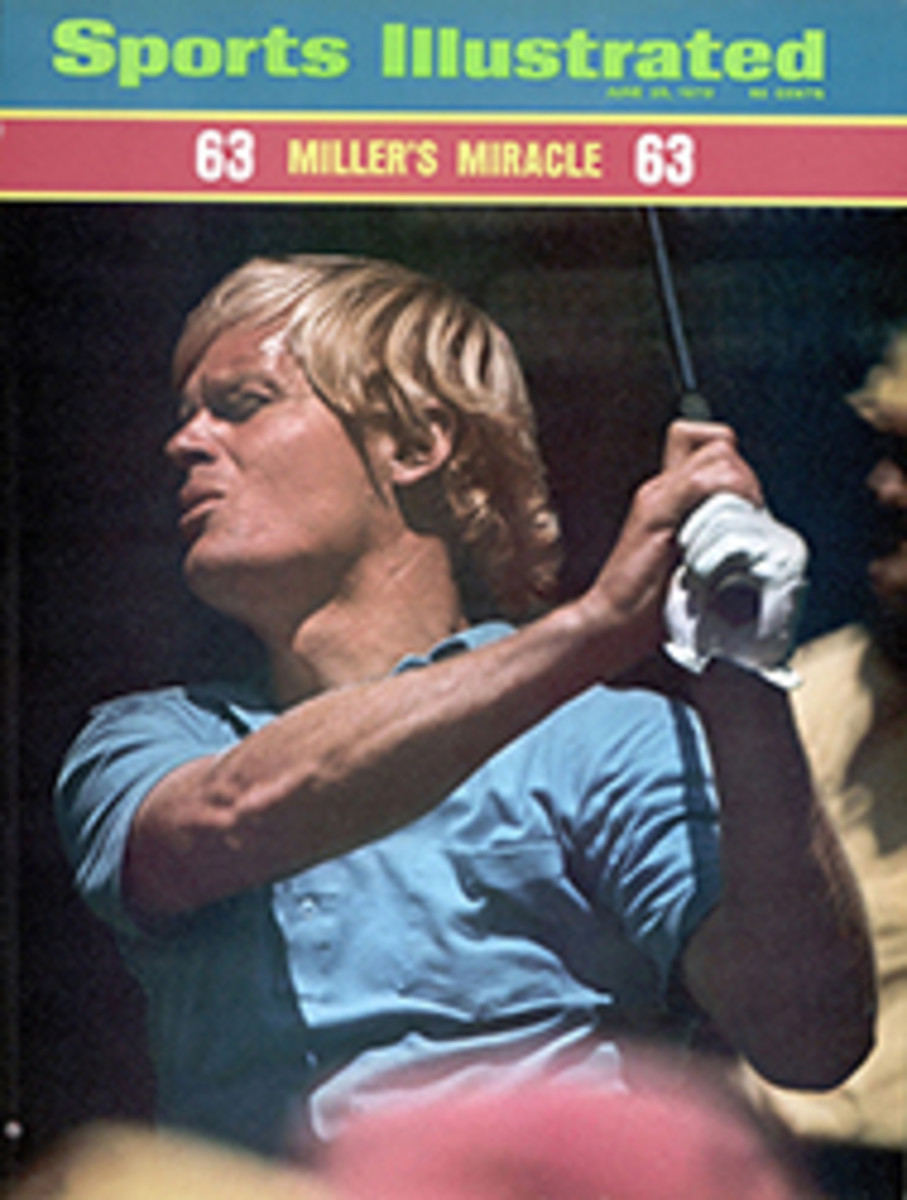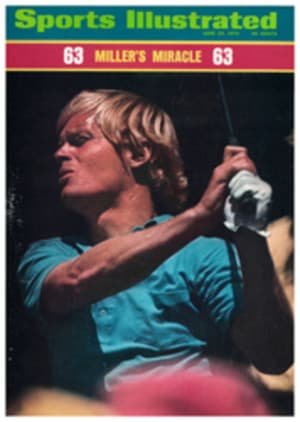
It was Moscow oar bust in a ladylike way
Women's crew, which started with posture, has a surprising new standing. This was never more colorfully or pleasantly evident than last weekend in Philadelphia where 250 girls, co-eds and grown women gathered along the banks of the Schuylkill for the eighth National Women's Rowing Championships. They were there to compete in 19 different classes, in everything from the light wherry—a sort of throwback to the old work boat—to the same sleek Pocock shells for eight with coxswain that the men use. In the U.S. today there are 58 women's rowing organizations. Twenty-three of them were at Philadelphia and in six heavyweight classes the prize was a trip in late August to the European championships in Moscow.
Were the girls primed for their big tests? Let a young lady from Radcliffe, the favorite in the eights before the regatta began in almost perfect spring weather on Friday, tell it. "Rowing is a total change," said the oarswoman, jaded by the intellectual climate of Cambridge. "It is a nice escape, the only place that allows you to degenerate to the relaxing level of 'Kill 'em. Eat 'em.' Animal screams. Monkey imitations."
The Cliffies had dipped so deep into the animal kingdom as to have KILL 'EM taped on the back of the sliding seats in their shell and EAT 'EM inscribed on the back of their shirts. But it was up front that counted. Across the girls' chests was the legend MOSCOW OAR BUST.
The 'ems that the Radcliffe crew had to kill oar bust trying were a well-coached, well-equipped and well-financed Princeton eight that averaged 143 pounds and used a men's standard lightweight shell with ease, and a nearly professional Vesper Boat Club crew formed out of a team composed of nurses, lab technicians, teachers and physical education grad students. As expected, in the trials the Tigers of Princeton beat three other good crews, College Boat Club (Penn), Wisconsin and Williams. Radcliffe won over Vesper and Washington, and while that was not unexpected the time was—3:21.3 for the 1,000 meters, the best in women's rowing this year.
The Vesper women, who are flogged to the limit by coaching as fierce as any men's team endures, were beaten by a group of college girls whose training just could be tougher. Radcliffe is coached by John Baker, an unpaid recent graduate of the Harvard crew. Remarkably knowledgeable and articulate in rowing philosophy and physiology, he gets up at 5 a.m. to run and row along with the women. One of the nation's better scullers, Baker conceived the idea of having Radcliffe duplicate Harvard's near-mythical "50 stadia" drill—50 consecutive times up and down the steps of Harvard Stadium. After the first two stadia, plenty of candidates decided they were not cut out for the sport, yet 12 made it all the way, giving Radcliffe an exuberant self-confidence that led it into the nationals with a 6-1 record.
This is all far away from the days when women's rowing had its other standing, posture. As Gail Pierson, a singles sculler, Ph.D., assistant professor in economics at Harvard and president of the women's rowing organization, said last week, "The man who introduced rowing at Smith College was a nut on posture. He began the sport there thinking that it would improve the way the girls stood and walked. He even developed a special rocking seat that wasn't much good for getting anywhere but was great for the old posture."
Little more enlightened were the people who got a women's crew program going at the University of Washington in 1897. The teams wore bloomers and marched to the boats in formation while men carried the boats. It was all form. A women's team was scored on how gracefully it got into the boats and how gracefully it rowed.
Well, as it turned out, those crews and all the women's crews that succeeded them had exceptionally good posture and they rowed gracefully. Posture and grace, in fact, are what separate the women from the boys. Coaches at Philadelphia, male and female, insisted that women are easier to teach because they are so much more at home with technique.
"It's a hard thing to communicate to guys that they have to row with grace," said the University of Washington No. 3 oar, Joanne Williams. "Men kind of muscle it through. We have to row it through. We've seen new guys, untrained but real athletes, get in a boat. The whole boat just jerks through the water in a zigzag. We yell at them, 'Be graceful.' "
"Technically, girls row as well or better," says Gus Constant, the Vesper coach. "Put green new guys in a boat, and the oars and water fly in all directions." His wife Karin, a top oar in five different events, says, "Women start with better balance and more finesse. Their bodies are more relaxed. They make this little controlled motion and actually they go faster."
"But they have to learn later that they must really pull hard," Gus says. "Guys know that. The girls, however, have had very little experience with real competition in their lives." ("Our girls have about as much competitive experience as an eighth-grade boy ever has," says Radcliffe's Baker.)
"Our biggest problem has been convincing girls that rowing isn't risqué," Dr. Pierson says. "We have to assure them that girls who row don't necessarily look funny."
"Girls won't come to you," Gus Constant says. "They still want to be invited." So the Vesper coach invites them everywhere. At cocktail parties he checks the women for height and shoulder width. He picked one prospect off a basketball court and another off the street, walking down Boathouse Row along the Schuylkill River. Once he was visiting his mother—and he found a recruit along that way.
Wisconsin is fairly typical. Four girls were dating crewmen and simply decided to start their own crew, drafting two swimmers, a tennis player and a cross-country runner. California State at Long Beach started as an auxiliary of the men's team, taking oranges and water to the men's crews. Most of the other women's teams began as notices on bulletin boards.
Some of the new oarswomen were daughters of old crews. "Maybe girls identify more with their fathers," one man suggested. But even there the pipeline sputters. "I only got interested because I went out with a guy who rowed," says Cindy Pryde, daughter of a former Washington crewman. "I didn't even know my father had rowed until I got into it myself and he took out his scrapbooks. I guess he probably mentioned it, but I just vaguely remembered Dad was in one of those lesser minor sports."
The Ivy League schools seem to have a definite edge here. Perhaps there always has been more similarity between the upper- to upper-middle-class Ivy Easterners of either sex, particularly on sailing deck, tennis court or diving board, than there is with their contemporaries elsewhere. Rowing carries this further. In manner, general good health and half-raucous banter as well as performance on the water, Eastern women's and men's crews display a rather remarkable similarity. When the Princeton women sit in a circle and sing Old Nassau, the resemblance to other Tigers is eerie.
Other than finding people to row, the problems have been men and money, or money and men. They go together. Coaches of men's sports are not happy about sharing diminishing funds with a new and expensive pastime. "Actually," says Paula Mitchell, coach of Washington, "the men's team has been generous. When we break equipment at Washington, they pay for it. And they let us use their brand-new shells for the Steward's Cup regatta this year."
That was a mixed blessing. "We came out with bloody knuckles because we weren't used to the oar handles going right out over the oarlocks," No. 6 oar Pryde says. "In practice it seems like every morning we have to repair our tub before we go out. Or we get out and discover a big crack and have to row like mad to get back before we sink."
To raise money—all women's crews are hung up on this dry dock—Long Beach State managed to train while it earned by staging a row-athon. One four rowed 43 miles in a day, another 40 miles. Other crews have attacked the problem more or less conventionally, running rummage sales, shirt sales, holding beer parties and even begging outside of shopping centers with tin cans.
But all such travail was behind and forgotten as the women's eights lined up for their final go on a spectacular Sunday afternoon. Radcliffe, Vesper and Princeton looked like Harvard, Vesper and Princeton on the water. Before the race for Europe, one Cliffie said, "When you're suffering from fatigue, jock itch or creeping paralysis, think Moscow."
And Moscow it will be for Radcliffe. Surer with its bladework despite five freshmen and only one member of last year's crew in the boat, the Radcliffe crew made better use of a tailwind and killed off Vesper and Princeton with a murderous 43 cadence. The Cliffies won by half a length in 3:15.4, again bettering the year's best for the distance.
As in men's rowing, where heavyweight eights get 90% of the attention, this was the big event of the finals. But there were winners in light boats, singles, doubles, pairs, quads, fours and, for sure, wherries. In the scoring for all events Vesper outrowed Washington by half a point. The two were followed by two California teams with their breezier, un-Ivy but more flowered approach to crew. Either one could be the wave of the future. One Californian, however, found at Philadelphia that the future is now. She is Joan Lind of the Long Beach Rowing Association, and she is not only lovely but something of a superwoman. She managed the remarkable feat of winning in the heavyweight singles, the heavy doubles and the heavy dash (a single scull at 400 meters) besides stroking the heavy quad that finished second. When she is not pulling an oar, she cycles, runs 10-mile races and dead lifts 400 pounds. Not long ago she finished third against men in a set of eight half-mile runs. Fatigue, apparently, is something that never has crossed Joan Lind's mind.
PHOTO
RADCLIFFE'S OARSWOMEN WON THE EIGHTS TITLE WITH THE YEAR'S FASTEST TIME
PHOTO
VESPER COX DROVE HER QUAD IN FIRST

